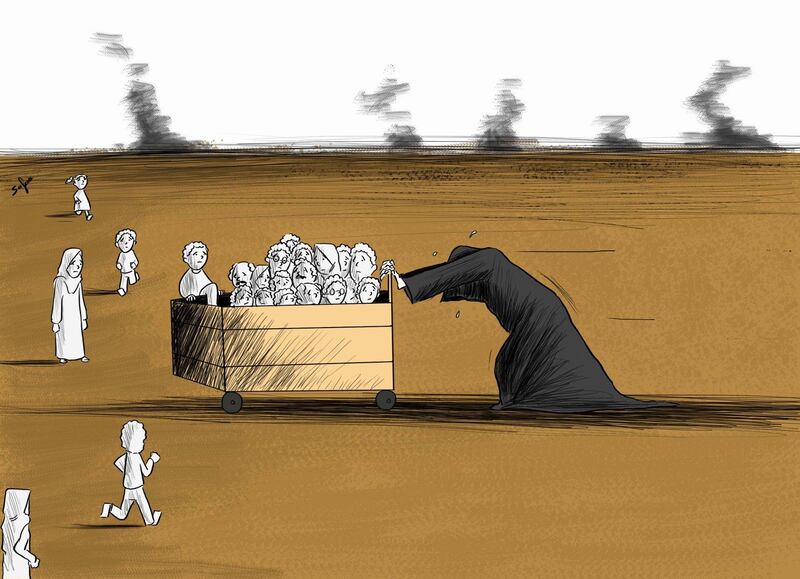Every night Safaa Odah, 34, wrestles with her drawings under the unreliable light powered by Gaza's four hours of daily electricity.
She sits at her table, sketching the atrocities she has come to witness in the besieged strip of land she calls home.
The editorial cartoonist has spent the last nine years of her life rushing to draw some of Gaza’s most pressing issues as citizens continue to resist Israeli occupation.
Gaza has been under blockade since 2007, when the ruling party Hamas came to power, prompting Israel and Egypt to partly seal their borders.
On nights when Safaa's familial duties take longer than expected, she finds her first pen-stroke interrupted by sudden darkness, enveloping her work, her home and the rest of the besieged strip of Palestinian land.
“That’s when the ideas stay in my head, for days sometimes, festering or transforming into something new,” she said.
When she does finally get them on paper, the juxtaposition of Safaa’s innocent drawing style and the gravity of the subject matter are startling.
Her work almost always focuses on the realities of today's Gazans. Her latest drawings suggest she has matured, perhaps forcefully, as a result of the increasingly dire state of the Gaza strip.
_________
Read more:
Israel to build almost 4,000 new West Bank settlement units
A self-immolation shines light on Gaza’s despair
Editorial: Nakba Day is a reminder of the need for a peaceful solution for Palestinians
__________
“Outside of not being recognised, the situation in Gaza, takes whatever ambition or passion one has and takes it away from them," she said. "But I haven’t once in nine years doubted what I want to do.”
After nine years of little recognition, her work is beginning to be celebrated both at home and abroad.
In a drawing published last week, she shows death hooded and strained, almost parallel to the ground pushing a crate full of children. In the background, billows of black smoke represent the lit tires from the Great March of Return, which saw more than 60 Palestinians, eight of whom were children, killed by Israelis.
In another sketch published earlier this month, she depicts a Palestinian mother smiling in her sleep and holding her haloed son.
Another shows paper airplanes arching over an interlacing construct of the Israeli apartheid wall – it depicts the difficulties Palestinians living in the West Bank face in communicating with others in their own villages behind the wall.
The subject matter, she says, is almost always humanitarian.
But when the topic is as highly polarizing as the Palestinian crisis, politics almost inevitably seeps into her work.
In a drawing published in May, Safaa shows an outstretched hand in military garbs handing out a photo of a child to a series of bullets waiting in line.
“People took that as they want to take it, but I stick to what I believe is a humanitarian struggle, a struggle for people to live,” she said.
At times, her work sparks the ire of conservatives. Her subject matter is not exclusive to Gazan issues, as she challenges preconceived ideals of Muslim femininity.
“Sometimes, I find myself more confident in these topics, to look at them and to try to get people to think about what they truly mean,” she said.
Regardless of the resistance she faces, Safaa continues to work steadfastly.
Safaa recalls what a professor once told her during her Master's degree in psychology: everybody has talent, it's simply a matter of discovering what it is.
“This is my talent, this is who Safaa is," she explained. "In Gaza, it’s tough to follow your dreams, but I think I have found myself, and I continue to learn more about who Safaa is in each drawing.”





